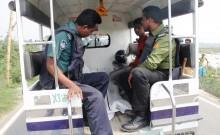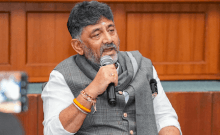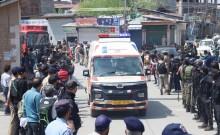The Telangana Bill was passed in the Indian Parliament on 20 February 2014, carving a separate state out of Andhra Pradesh, the first state formed in India on linguistic basis in 1956.
Now, just a presidential signature away, Telangana is waiting to become the 29th state in the country. Leaders of all political parties from the Telangana region in AP have joined the movement.
Below is the chronology of major events of the Telangana movement since 1948.
1948: On 17 September, Telangana was merged into the Indian Union. Till then, the Telangana region was part of the then Hyderabad state.
1950: On 26 January, the Union government appointed a civil servant, M. K Vellodi as the first Chief Minister of Hyderabad state.
1952: In a first democratic election, Burgula Ramakrishna Rao was elected as the Chief Minister of Hyderabad state. On 16 December, Potti Sreeramulu martyred by going on a fast-unto-death for 53 days, demanding a separate state for Telugu speaking areas.
1953: On 1 November, Andhra was carved out from the erstwhile Madras state on linguistic basis following the death of Potti Sreeramulu. Kurnool in Rayalaseema area was the capital of the then Andhra state. A proposal for amalgamation of Hyderabad state with Andhra state came and the then Hyderabad state Chief Minister, Burgula Ramakrishna Rao, supported the decision of Congress to merge the two Telugu-speaking states.
1955: On 25 November, the Andhra Assembly accepted the proposal and passed a resolution to unite the two states. Telangana leaders opposed the resolution, but they were promised in the Assembly to safeguard their interests.
1956: On 20 February, leaders of both Telangana and Andhra areas reached an agreement to merge the two states-Andhra and Hyderabad. Bezawada Gopala Reddy and Burgula Ramakrishna Rao signed the agreement. On 1 November, Telugu-speaking areas of Hyderabad state were merged with Andhra state under the State Re-organisation Act. That was the birth of the present Andhra Pradesh. Hyderabad, the then capital of the Hyderabad state, was made capital city of the united Andhra Pradesh.
1969: Protesting the government's failure to implement the 1956 agreement of safeguarding Telangana's interests, an agitation began. Marri Channa Reddy started the "Telangana Praja Samiti," to fight for the cause of Telangana state. The intensified protests, which even involved students, turned violent, and 300 of the protestors were killed in police firing.
On 12 April, the then Prime Minister of India, Indira Gandhi, came up with an eight-point plan to safeguard the interests of the residents of Telangana, following several rounds of talks with leaders of the two regions. However, Telangana leaders rejected the plan and continued their agitation under the umbrella of Telangana Praja Samiti.
1972: Leaders from coastal Andhra and Rayalaseema regions started ''Jai Andhra" movement for a separate Andhra state to counter Telangana's struggle.
1975: A Presidential order was issued to implement a Six-Point Formula, providing some benefites to safeguard Telangana.
1997: Telangana movement received BJP's support, and the party promised a separate Telangana state in 1998 election.
2001: Telugu Desam Party leader K Chandrasekhara Rao (KCR) floated the "Telangana Rashtra Samithi" (TRS), and revived the movement for a separate state.
2004: KCR-headed TRS and fought elections in an alliance with Congress and got five seats in Lok Sabha and 26 seats in the Andhra Pradesh State Assembly. With this, UPA government at the Centre included Telangana issue in its common minimum programme.
2008: Telugu Desam Party also announced its support for Telangana statehood demand.
2009: TRS contested elections in alliance with the TDP. But TDP won only two Lok Sabha and 10 assembly seats. On 2 September, Andhra Pradesh Chief Minister Y.S. Rajasekhara Reddy died in a helicopter crash. Reddy's demise triggered a political uncertainty in AP and the Telangana movement became rigorous. In October, intensifying the agitation for Telangana state, KCR held a fast-unto-death protest, prompting the Congress-headed UPA government to take up the issue seriously.
On 9 December, the Indian government announced its decision to initiate a process to form a separate Telangana state. On 23 December, the government sought for consensus of all political parties on the issue, citing protests in Rayalaseema and Andhra regions (Seemandhra). Instead it received numerous resignations of MPs and state legislators, opposing splitting of the united AP.
2010: On 3 February, a five-member Srikrishna Committee was formed by the government to look into the Telangana issue. In December, the Srikrishna Committee, which elicited the opinions of all regions of AP on the formation of Telangana state, suggested six options in its report submitted to the government.
2013: On 30 July, Congress Working Committee (CWC) gave its consent for bifurcation of Andhra Pradesh, triggering severe protests against it in all Seemandhra areas.
2014: On 20 February, the UPA government managed to pass the bill on Telangana in the Parliament. The bill now awaits the President's seal of approval, after which Telangana, comprising of 10 districts of the united AP, will become the 29th state in the Indian Union of states.

















